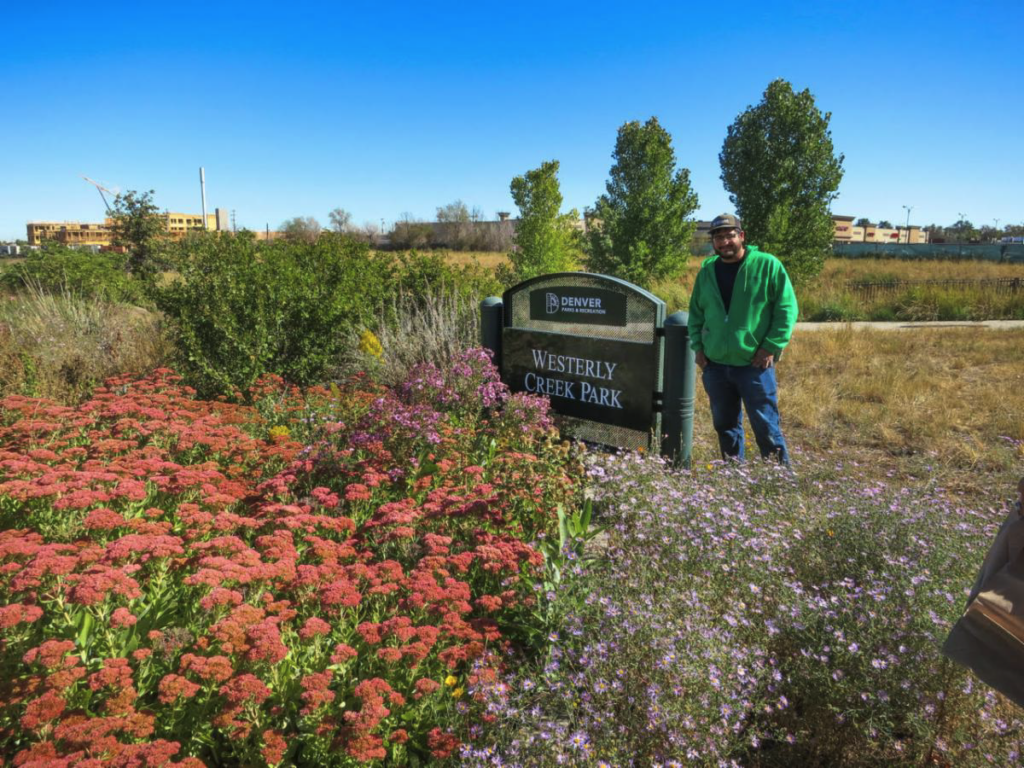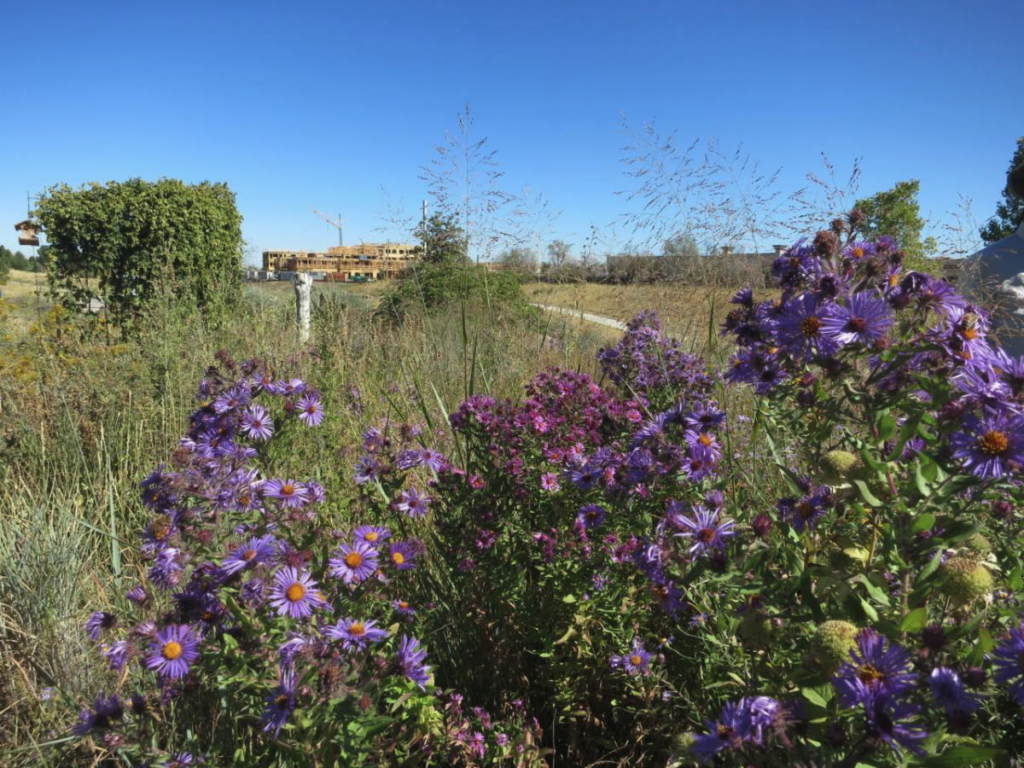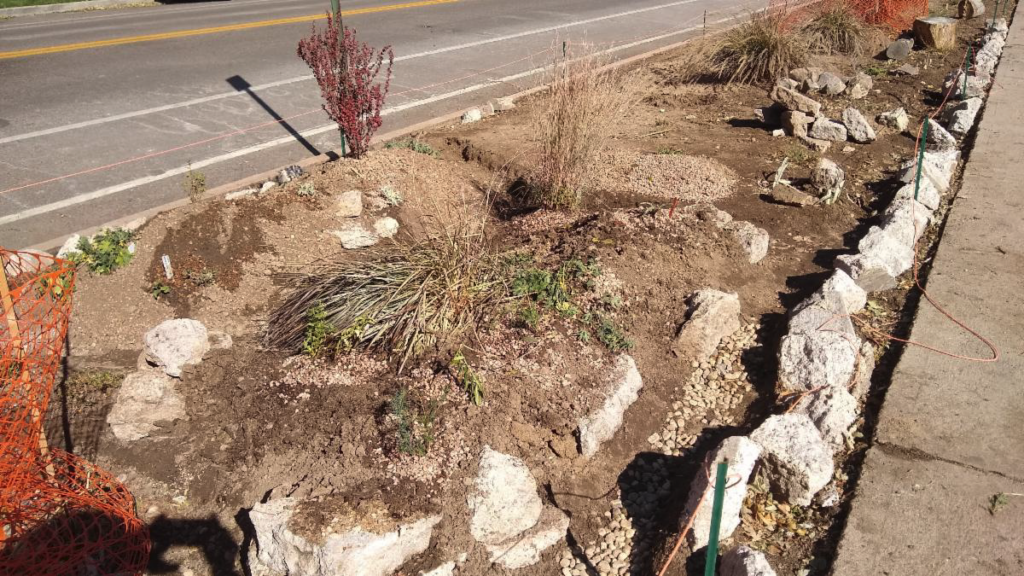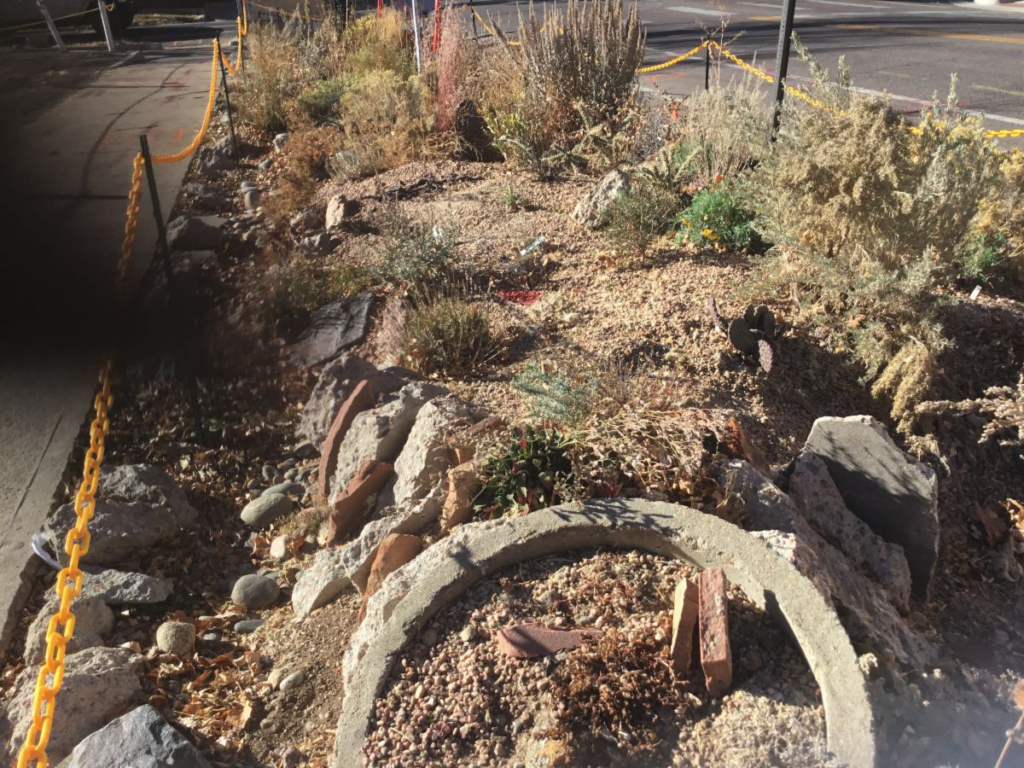You may know that Wild Ones Front Range Chapter has three demonstration projects, and one more we are “adopting.” We have also partnered with Denver Parks and Recreation on another project. They are all different, but worthy of some attention. So, we will be highlighting two of them here this month, and the other three next month. We hope to have a demo project tour in 2022 so that we can all bask in their beauty in person!
Denver Parks And Recs Central Park Native Plant Gardens
One Volunteer’s Experience
By Mary Hinton
Over the 2021 gardening season, I participated in the partnership between Denver Parks and Recreation (DPR) and Wild Ones Front Range (WOFR). Wild Ones, as you know, is a group seeking to preserve biodiversity in native plant communities, and this seemed like a good opportunity to do just that. I volunteered as a WOFR member to help establish and maintain the pollinator gardens in the Central Park neighborhood of Denver, an effort led mainly by Rahman Minhas of DPR. At each session about four to eight volunteers would turn out.
Meeting people, sharing our experiences, and making friends was what made this so much fun for me. Rahman is an encyclopedia of information about horticulture and carries a vision for the future of sustainable green spaces in Denver. He tirelessly answered our questions and always made us feel like our work was meaningful.
Here’s a rundown of what I did:
May 19 – At Greenway Park, East 26th Ave., we planted pussytoes and prairie cinquefoil from DPR’s greenhouses.
May 26 – At Westerly Creek Butterfly Garden, East Montview Blvd., we weeded out prickly lettuce and bindweed. June 2 – At Central Park, MLK Blvd., we planted thistle (the good kind!) and weeded out kochia.
June 27 – At Great Lawn Park, Yosemite St., we identified chocolate flower and saw an Achemon hawk moth.

July 14 – At Westerly Creek Butterfly Garden, we weeded out copious amounts of bindweed.
July 28 – At Westerly Creek Butterfly Garden, I identified the beautiful datura, or devil’s trumpet, and learned that it is poisonous.
August 11 – At Westerly Creek Butterfly Garden, due to poor air quality, we all worked for only a short time, but I identified millet and rose mallow.
August 25 – At Greenway Park, the conversation turned to the Colorado Native Plant Society (CoNPS). I went home and joined CoNPS.
September 22 – At Westerly Creek Butterfly Garden, we collected seed from at least 19 plant species.
October 6 – At Westerly Creek Butterfly Garden, we collected seed from yellow Indian grass, wild Canadian rye, big love aster, and more.
I learned a few important lessons to become a better native plant gardener here on the front range (I recently relocated here). First, to recognize invasive weeds. I focused on three: bindweed, prickly lettuce and kochia. I felt proud that I was able to keep up with the challenge of their changes – from seedling to flowering, to die back. I’ll have to relearn them next year, maybe add another to the list, and hopefully retain more.
The second thing I learned is to connect the common name to the scientific. Again, my tactic was to start with just a few. I now know the scientific names for Prairie Blanket Flower, Bee Balm, Columbine, Rocky Mountain bee plant, and common milkweed. This is essential for following conversations with serious native plant gardeners.
I hope that the leadership at DPR and WOFR will continue this partnership next year. I learned so much about Colorado native plants, and I look at our parks, pollinator gardens, meadows, and prairies with new appreciation.


The Greenverein Project
By Judy Trompeter

The Greenverein project at the Denver Turnverein, 1570 Clarkson St., has dramatically changed the area between sidewalk and street, from a barren, asphalt covered eyesore devoid of any life into a stunning collection of native plants, berms, and trees. Wild Ones Front Range Chapter (WOFR) designed and installed the garden with help from Turnverein and Uptown on the Hill neighborhood organization volunteers. Their work adds beauty to the neighborhood while also providing sustenance to butterflies and bees. And if we ever get another rainstorm in drought stricken Denver, it will absorb the runoff. The garden has been recognized as a Habitat Hero garden by Audubon of the Rockies.

Greenverein has faced some difficulties of late, as three utility companies dug up their lines and/or added boxes to the outlawn. We worked with them to site the boxes and to repair the damage to the street side of the garden. WOFR hosted Seedling Salvage events at the Greenverein Garden in the spring, which turned weeding unwanted plants into a supply of native plants we shared with the public at the Pollinator Plant Swap. A win on all sides!


One of our lessons learned was that because this is a parking strip/hell strip garden (the land between the street and the sidewalk), it would have been a good idea to check in with potential stakeholders. We were not aware of some of Denver’s restrictions around these gardens. We did not know, for example, to check with utilities, beyond dialing 811 (we did that of course, locating all utilities before digging). We would have known in advance that a portion of this strip would be taken by the utilities.
In addition, the garden benefited by working with the “Be A Smart Ash” Program. They worked with us on tree selection.The garden continues to get rave reviews from passersby. It is a stellar example of what we can do with a hot, dry, urban piece of land. It was turned into a true pollinator oasis! Please come visit.
Curious to learn more about transforming your garden into a habitat with Colorado native
wildflowers, grasses, shrubs, and trees? Check out our native gardening toolkit, register for an
upcoming event, subscribe to our newsletter, and/or become a member – if you’re not one already!
